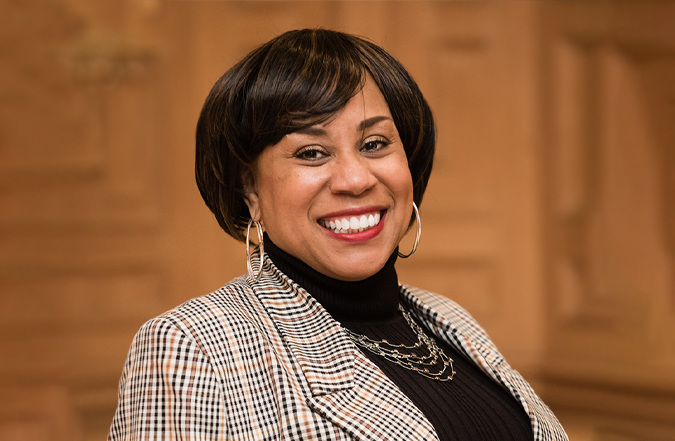
Deborah Burrus has worked in child welfare for nearly three decades, starting her career as an investigator in Texas. Today, Deborah is the state adoption director for the state of Georgia and a well-respected leader in the child welfare field.
So when Deborah told colleagues that she was applying to participate in the 2019 AdoptUSKids Minority Professional Leadership Development (MPLD) program, many people asked, “Why?”
Her answer: Because there is always something more to learn.
As a participant in the 2019 MPLD program, Deborah learned a lot about the issues of disparity and disproportionality in foster care. As part of the fellowship, she completed an action research project addressing the question: “In Georgia, why are there more Black children in foster care, proportional to their percentage of the population, and why do they stay in care longer?“
Deborah shared what she learned with us.
For people who may be unfamiliar with the concepts, how do you define disparity and disproportionality?
Disparity refers to the unequal outcomes of one racial or ethnic group as compared with another.
Disproportionality is the underrepresentation—or in this case, overrepresentation—of a racial group compared to its percentage of the population.
In the United States, Black children comprise 14 percent of the population but 23 percent of the children in foster care. In Georgia, they are approximately a third of the population and nearly half (46.5 percent) of children in care.
Why did you choose to focus your research project on this topic?
I’ve always been an advocate of doing the right thing for kids who come into care throughout the process—from the front door to the back. In my 11 years as the adoption director, we’ve done some great work—identifying and filling gaps; implementing policy and program changes; and generally working hard at making sure that our decisions are good for children.
But addressing disparity and disproportionality is one area where I think we have a lot of work to do. And it’s an issue I’m passionate about. I’m very conscious—more so than some people—about race and who is making decisions affecting kids of color.
What do you see as some of the causes of disparity and disproportionality?
It starts at the front door. Black families come into contact with mandatory reporters more frequently when accessing services. Then they encounter judges and workers—both Black and White—who have implicit biases and may not be culturally competent or may be responding to societal pressures. It’s a fact that White parents are more likely to walk out of a courtroom with their children. And that they are more likely to get preservation services. It’s not because workers, judges, and others are bad people! It’s because we aren’t having the conversations we need to have to open people’s eyes to these problems and become more culturally competent.
And, I believe, it’s because the people who are sitting at the table making decisions about children in care don’t look like them. I’ve seen it firsthand in my career, and my research bore this out. In Georgia, the ratio of Black to White frontline workers is 3:1, not matching but close to the percentages of children in care. By the time you get to county and regional leadership, the ratio of Black to White directors looks a lot different. That’s one reason the MPLD program is so important, because its goal is to develop more leaders of color.
You knew a lot about disparity and disproportionality going into your project. Still, were there things that surprised you?
One surprise was that people’s baseline is to view themselves as culturally competent. Part of my project was to develop and deliver a cultural competence training to professionals—workers, supervisors, and county and regional leadership—that covered topics like disparity, disproportionality, and cultural bias.
I surveyed participants before and after the 90-minute training. In the initial surveys, 92 percent said they thought their agencies were culturally competent. After the 90-minute training, only 13 percent felt that way! The majority also indicated that they felt more culturally competent after attending the training. That gave me hope.
What’s next?
In some ways, I walked away from this project with more questions than answers! I also left with a strong desire to share what I do know with others, and to encourage people working in child welfare to have difficult conversations about race and culture. I’m hopeful that with everything happening in our country right now, the time is right to push for this kind of dialogue.
I’ve also learned that one effective path to change is through legislation, as they’ve done in Texas. I’ve met with one legislator I know and plan to continue that work.
Whatever it looks like, my ultimate goal is to continue to strive to do the right work, in the right way, for the right people.